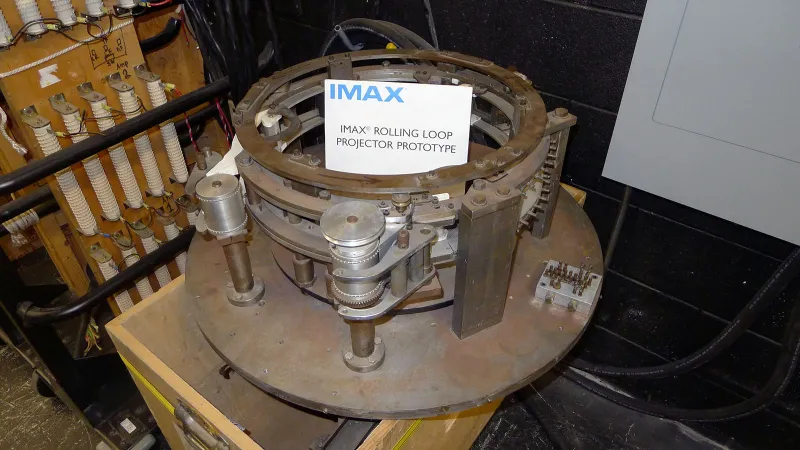IMAX® Projector
This article was originally written and submitted as part of a Canada 150 Project, the Innovation Storybook, to crowdsource stories of Canadian innovation with partners across Canada. The content has since been migrated to Ingenium’s Channel, a digital hub featuring curated content related to science, technology and innovation.
IMAX Corporation first captured the world’s attention with sharp, large-format films at Expo 70 in Osaka, Japan.
The IMAX® projector changed movie-goers’ expectations of spectacular wide-screen films when it debuted in Japan in 1970. IMAX® used an innovative film-transport mechanism to quickly and smoothly advance a 70-mm large-format film through the projector. This film carried an image ten times the size of the standard 35-mmmovie format, making it the largest frame in film history. As a result, the IMAX® projector delivered an image of astonishing breadth and detail.
The projector was the product of Canadian filmmakers Graeme Ferguson and Roman Kroitor, producer Robert Kerr, and engineer Bill Shaw. Building on their experience producing large-screen films for Expo 67, the team developed the IMAX® projector for the 1970 world’s fair in Osaka, Japan. After Expo 70, the projector was returned to Canada and installed in the first permanent IMAX® theatre in the world, the Cinesphere at Ontario Place in Toronto. IMAX® #1, as it was called, remained in service there for forty years, making it the longest serving IMAX® projector anywhere. It was finally retired in 2011.
IMAX Corporation was originally known as Multiscreen Corporation, a legacy of the company’s origins making multi-projector/multi-screen films for Expo 67.


























